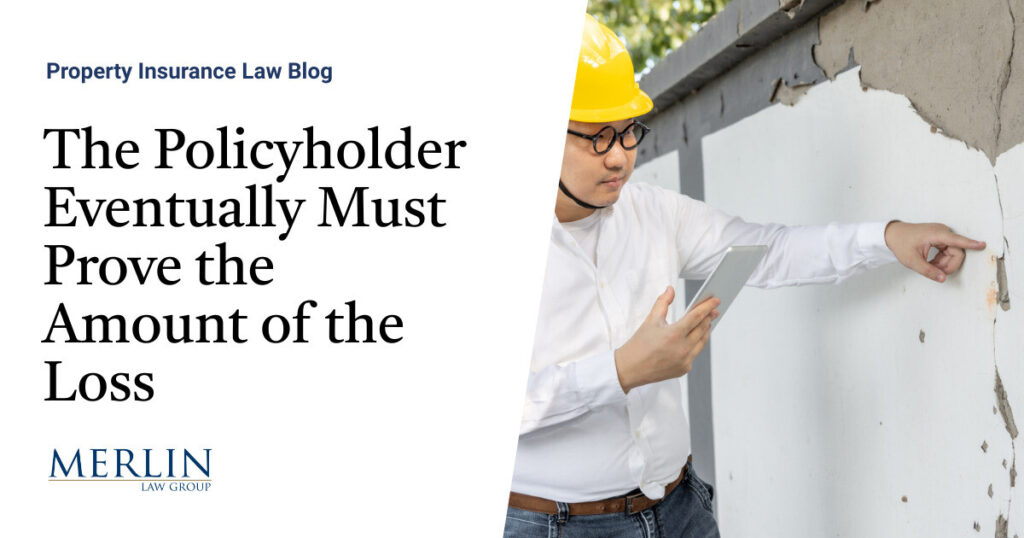The Policyholder Eventually Must Prove the Amount of the Loss

An unpublished California case decided this week1 makes a basic point of property insurance claim practice: The policyholder must eventually prove the amount of damage. Policyholders with a significant property damage claim should always consider hiring a competent and experienced public adjuster to do so.
The insurance company argued that it paid everything it determined was owed, and the policyholders did not provide any documentation to prove that more was owed:
State Farm argued McCarthy’s causes of action failed because State Farm paid her everything it owed under the policy, in light of McCarthy’s failure to document her loss. Regarding Coverage A (dwelling repairs), State Farm argued that the insureds had a duty to prove their loss by documenting the amount claimed, that State Farm had paid $763,409.43 in benefits, and that McCarthy and Michael Jr. never submitted documentation showing the cost to rebuild exceeded that amount. Regarding Coverage B (personal property), State Farm argued that it paid $186,191 in benefits and that the insureds never submitted a list of personal property destroyed in the fire, as the policy required. Regarding Coverage C (additional living expense), State Farm argued that it paid for temporary housing for McCarthy and for Michael Jr. through December 2019 (even though Michael Jr. was not entitled to any Coverage C benefits) and that State Farm stopped paying additional living expense benefits because the insureds did not submit proof they were rebuilding or relocating.
The appellate court agreed that the trial court correctly ruled for State Farm:
The court also concluded there was no triable issue of material fact regarding whether State Farm improperly withheld benefits. Regarding Coverage A, the court ruled that Furriel’s conclusory declaration lacked foundation and that McCarthy and Michael Jr. did not submit any estimates to State Farm until months after State Farm filed the motion for summary judgment in this action. The court also determined the policy required State Farm to pay Coverage A benefits to the trust as an additional insured. Regarding Coverage B, the court ruled the policy required State Farm to pay Coverage B benefits to the trustee as the legal representative for the deceased named insured, Michael Sr. The court also ruled McCarthy and Michael Jr. did not present evidence they ever submitted a proof of loss to State Farm. Regarding Coverage C, the court ruled that State Farm paid additional living expenses for McCarthy and Michael Jr. for one year, that McCarthy and Michael Jr. did not show the family was making any effort to rebuild or relocate, and that State Farm was not required to cover unsubstantiated expenses.
The case seems rather simplistic, which is probably why it will not be published for further legal precedent in California. But the lesson is clear—document and prove the amount of the loss. If you cannot do it yourself, hire an expert public adjuster to do it for you.
Thought For The Day
You have to learn the rules of the game. And then you have to play better than anyone else.
—Albert Einstein
1 Shawver v. State Farm General Ins. Co., No. B319252, 2024 WL 1168510 (Cal. App. Mar. 19, 2024).





